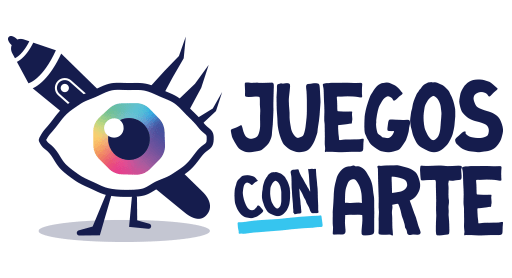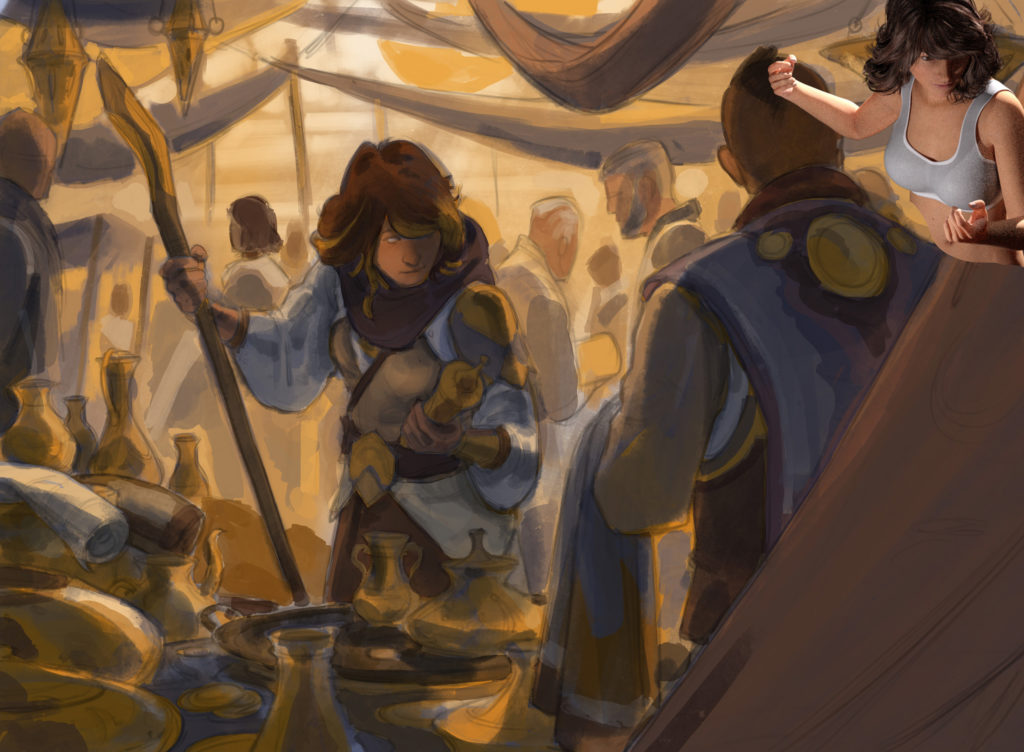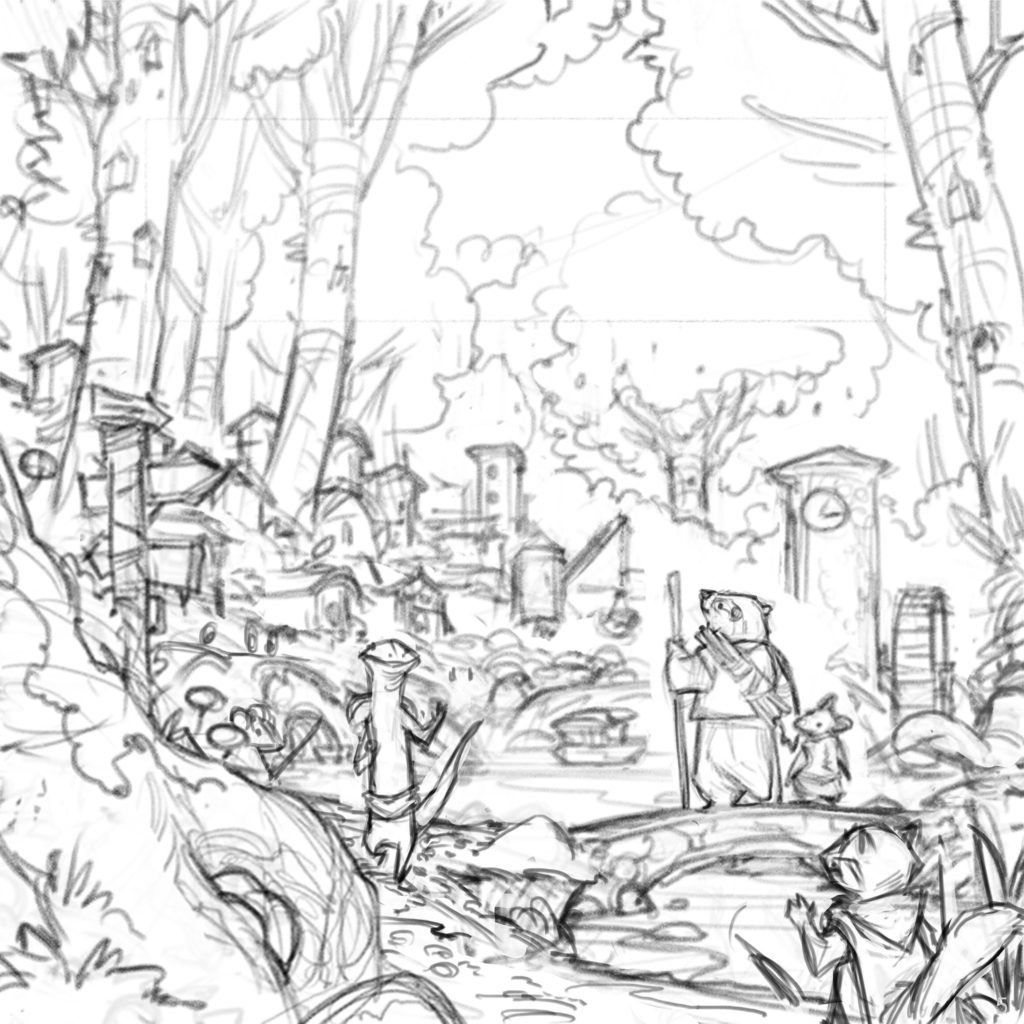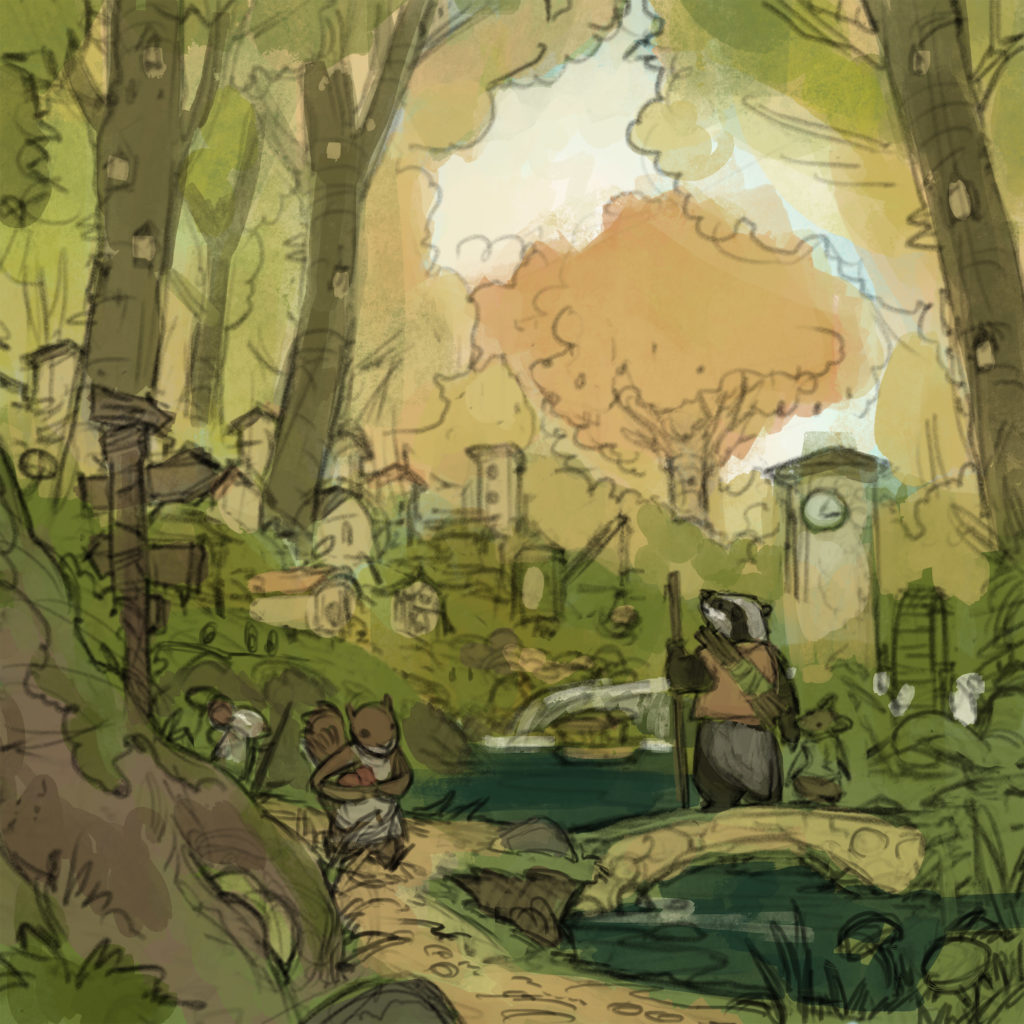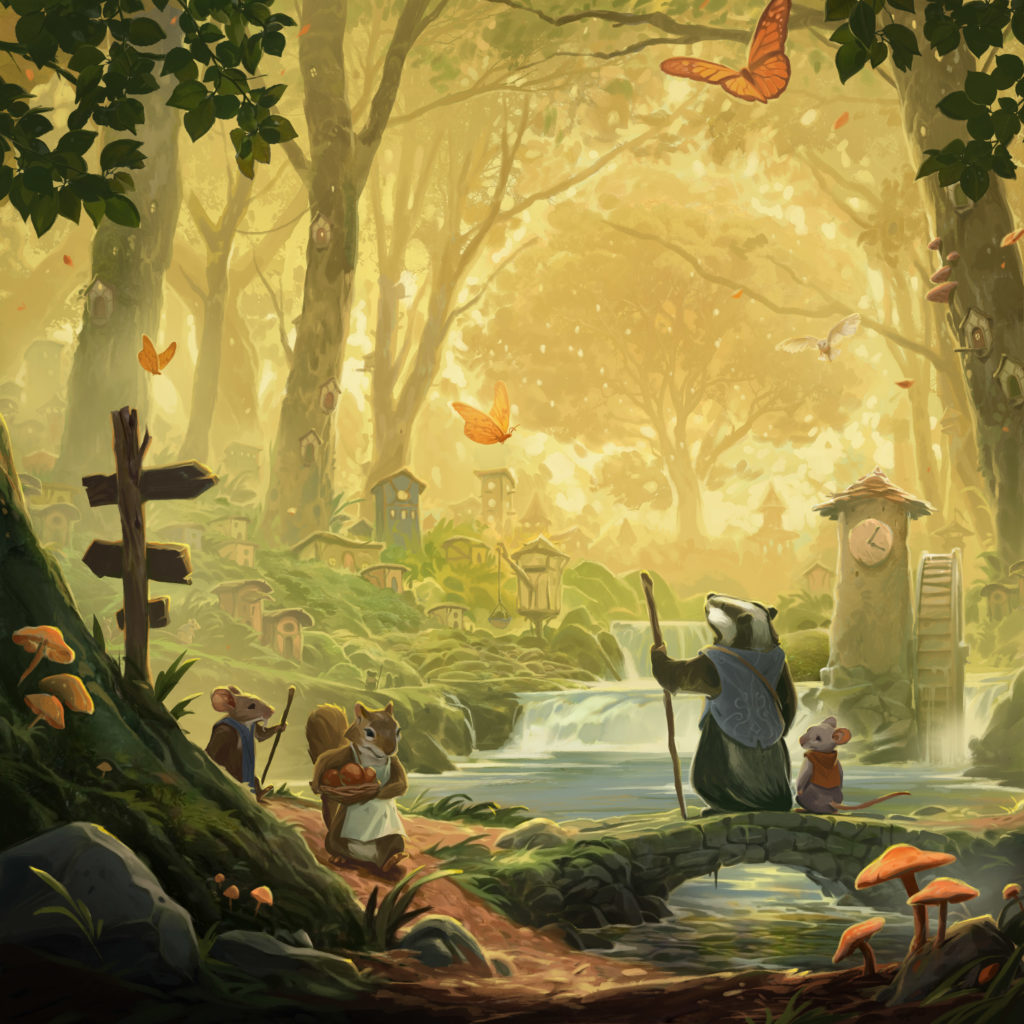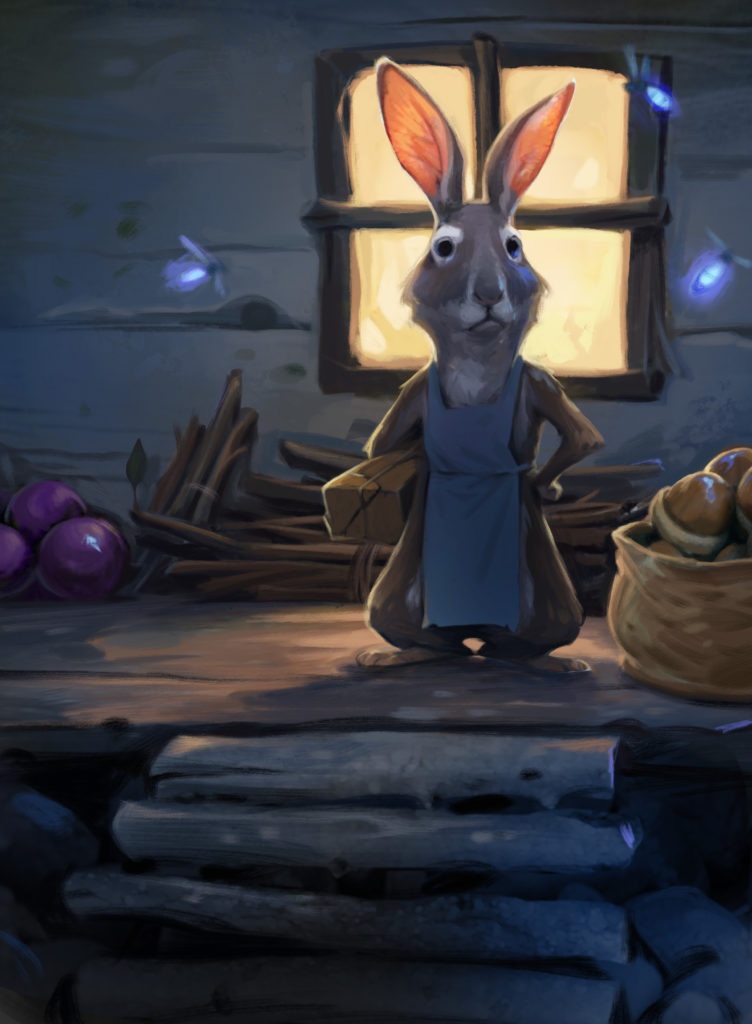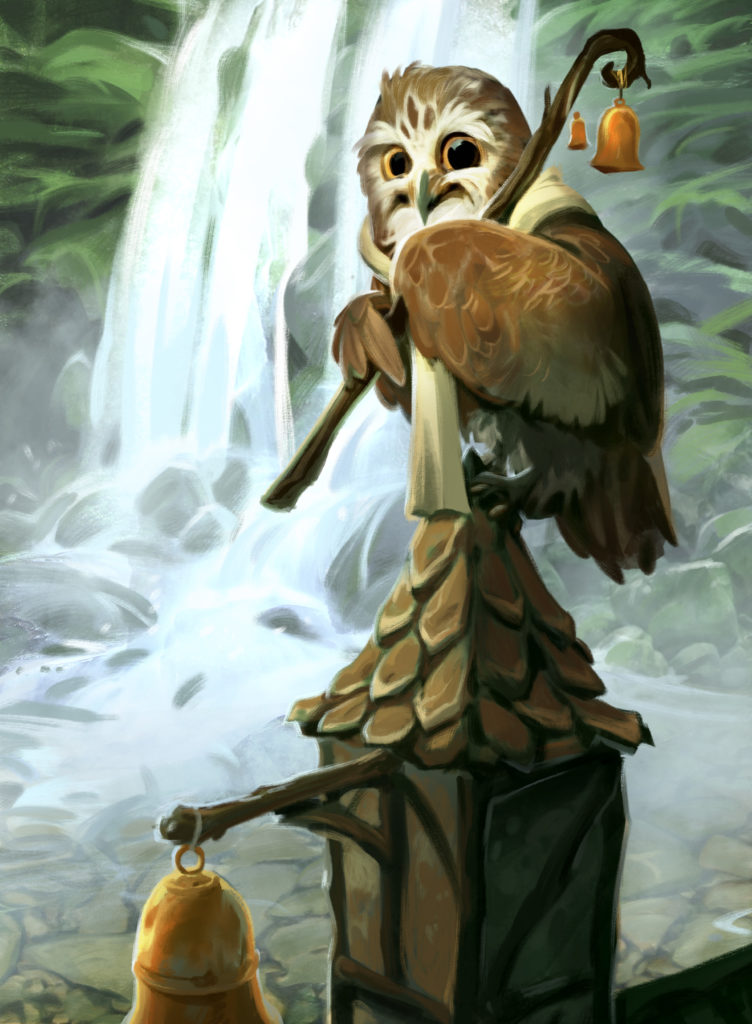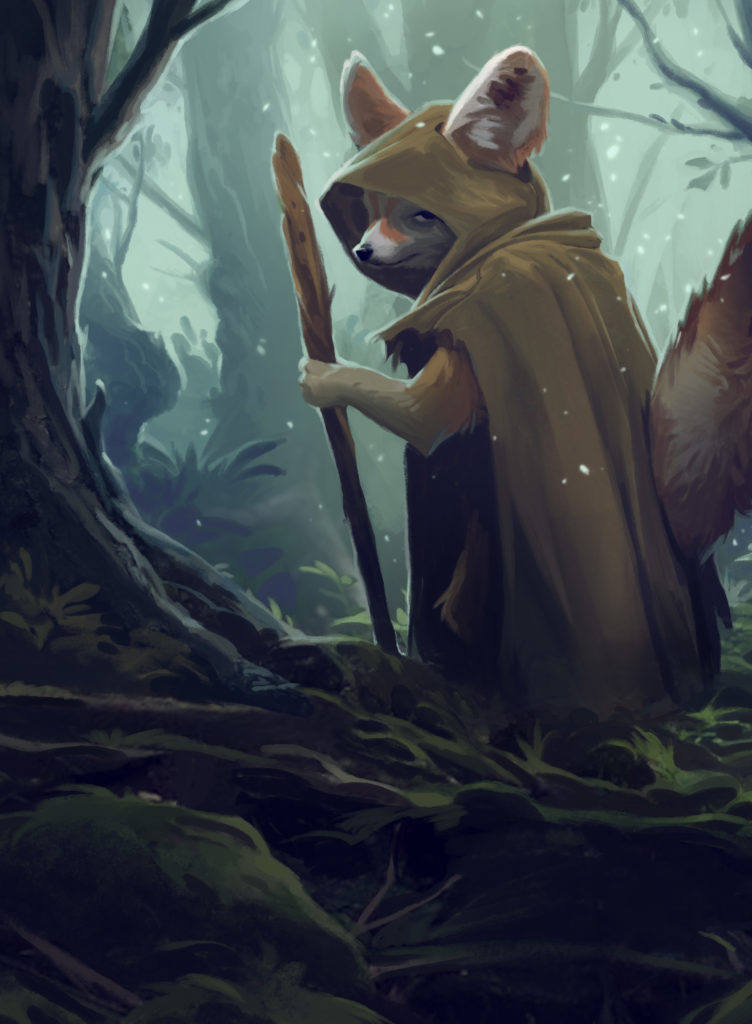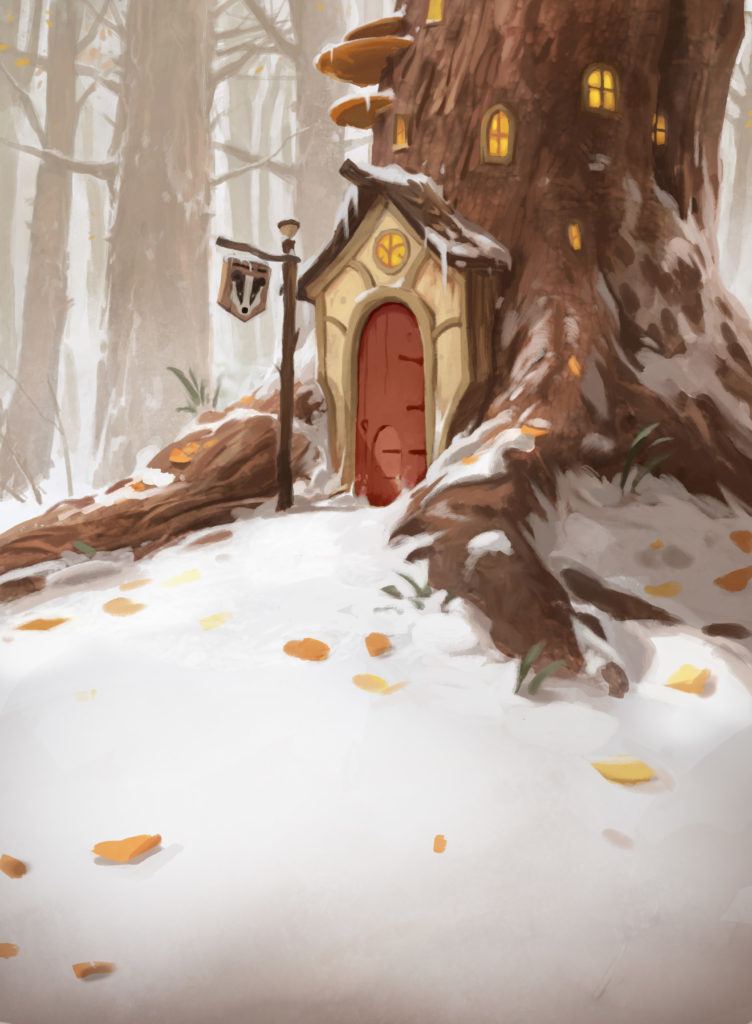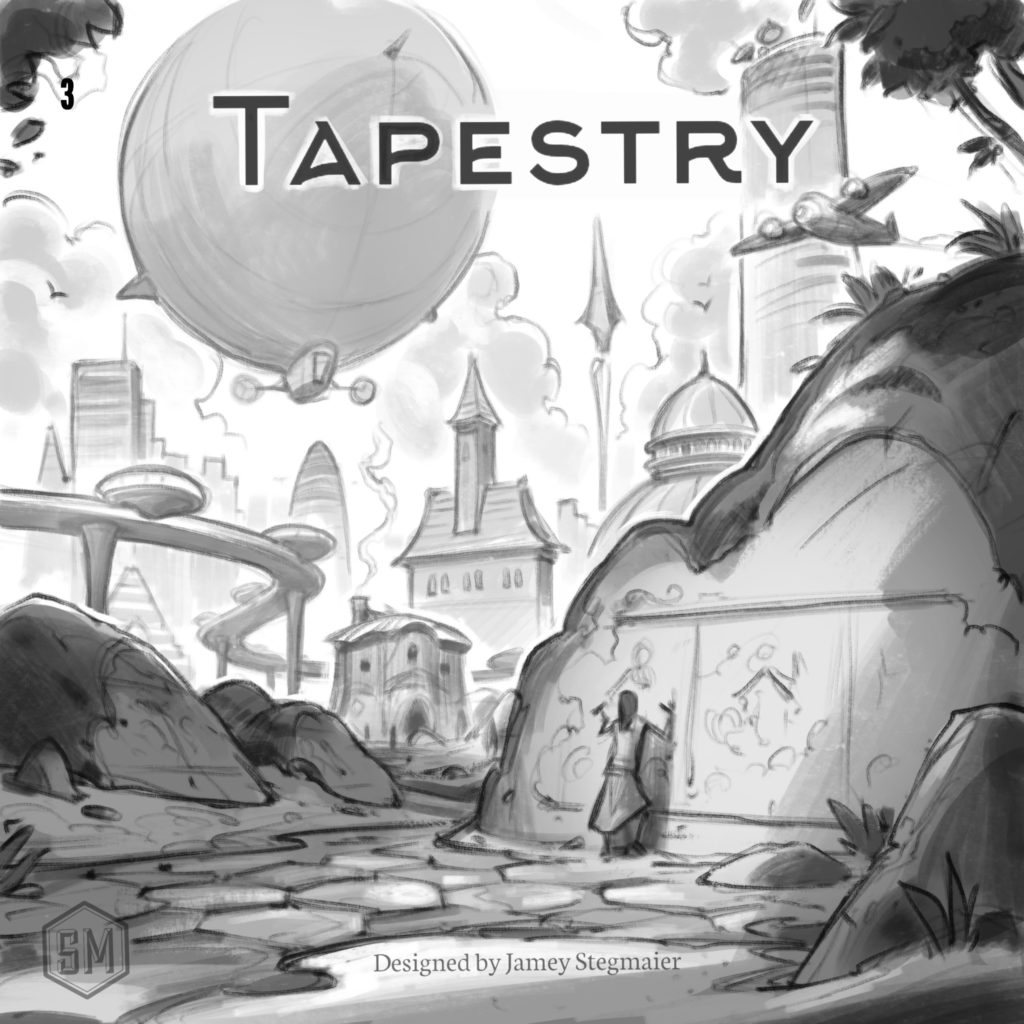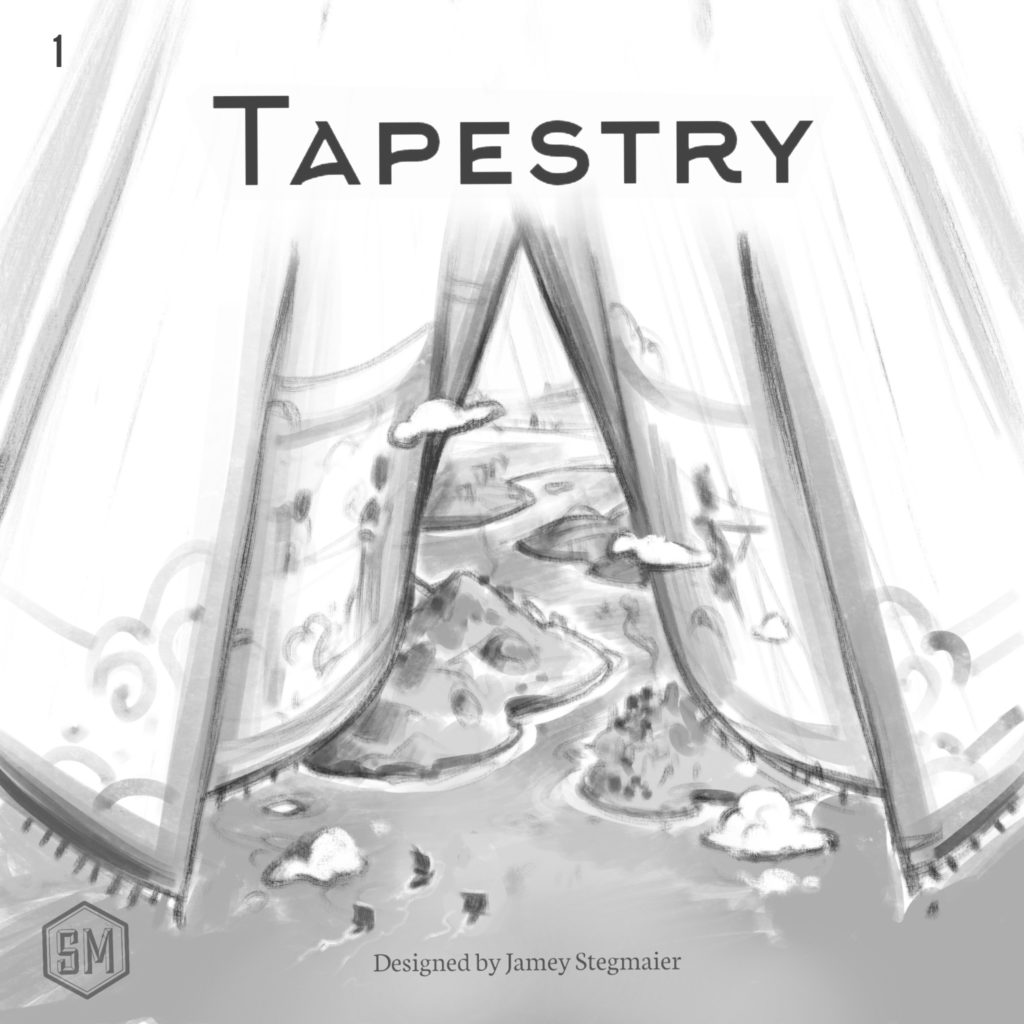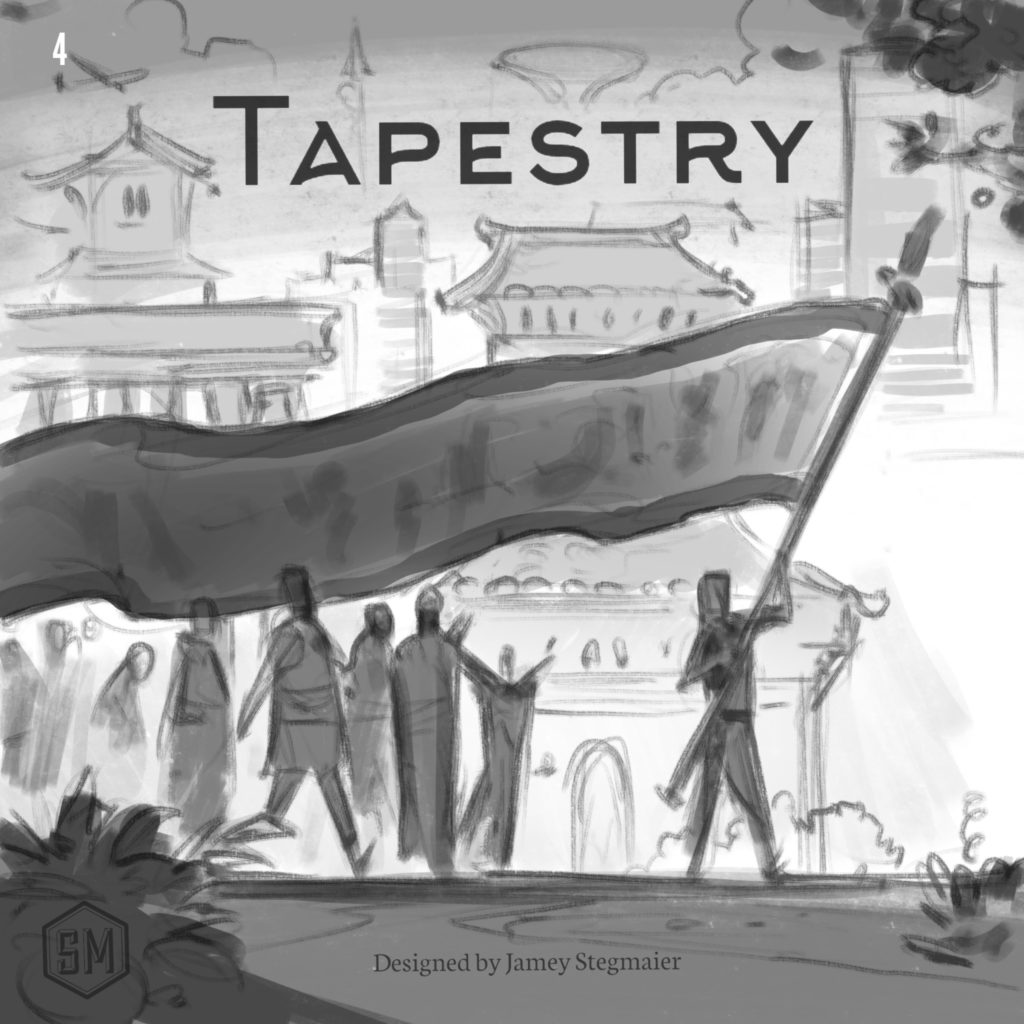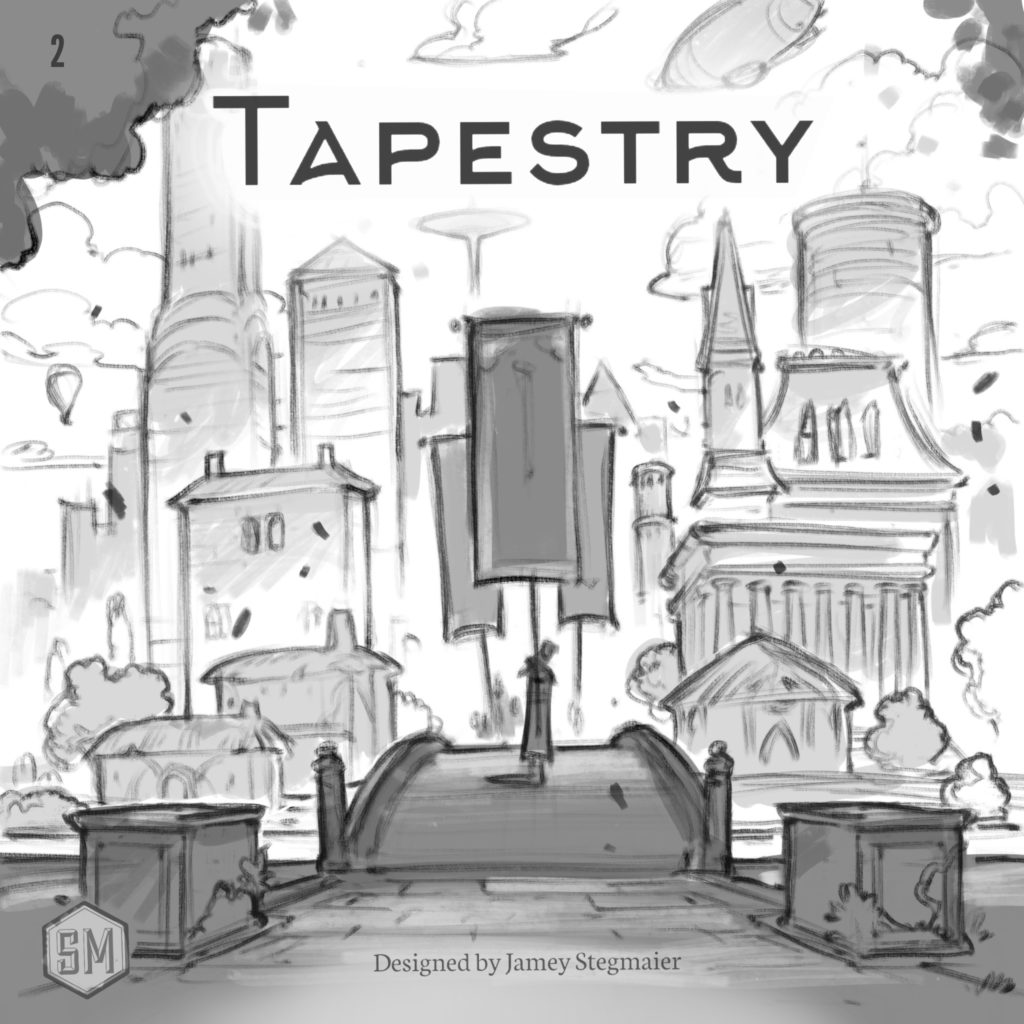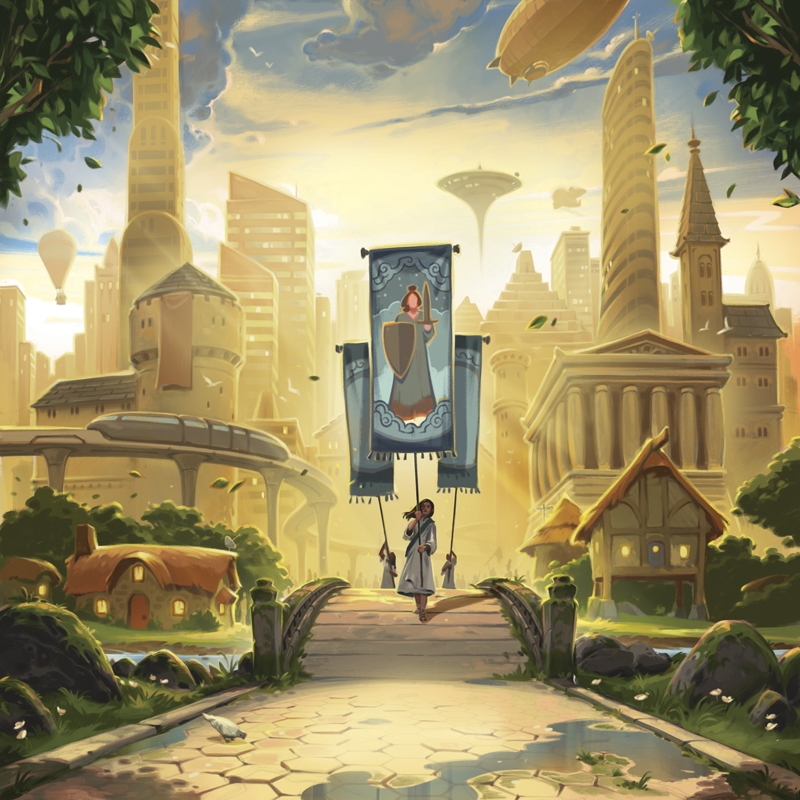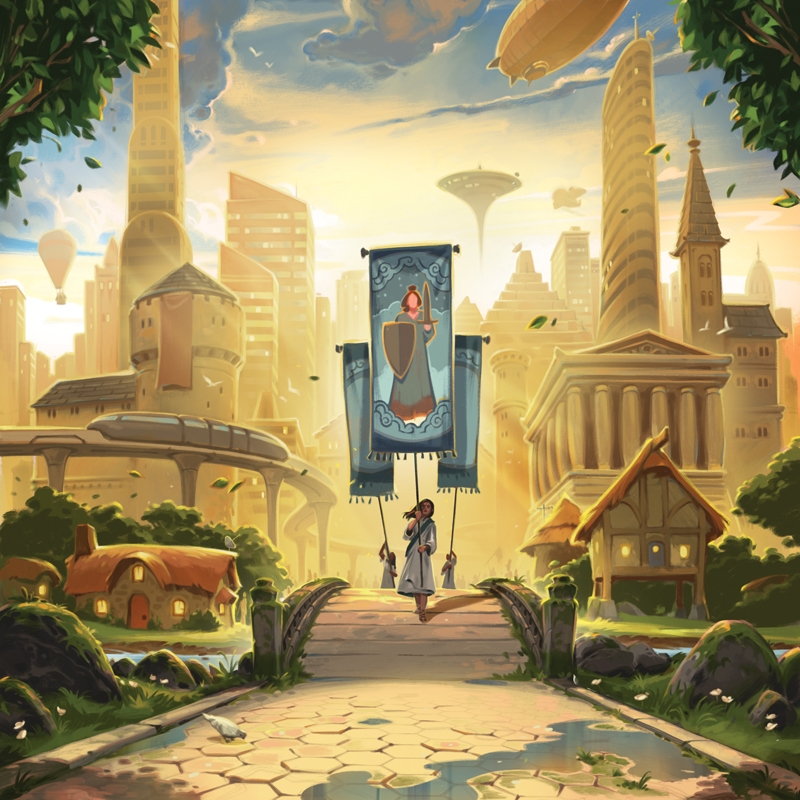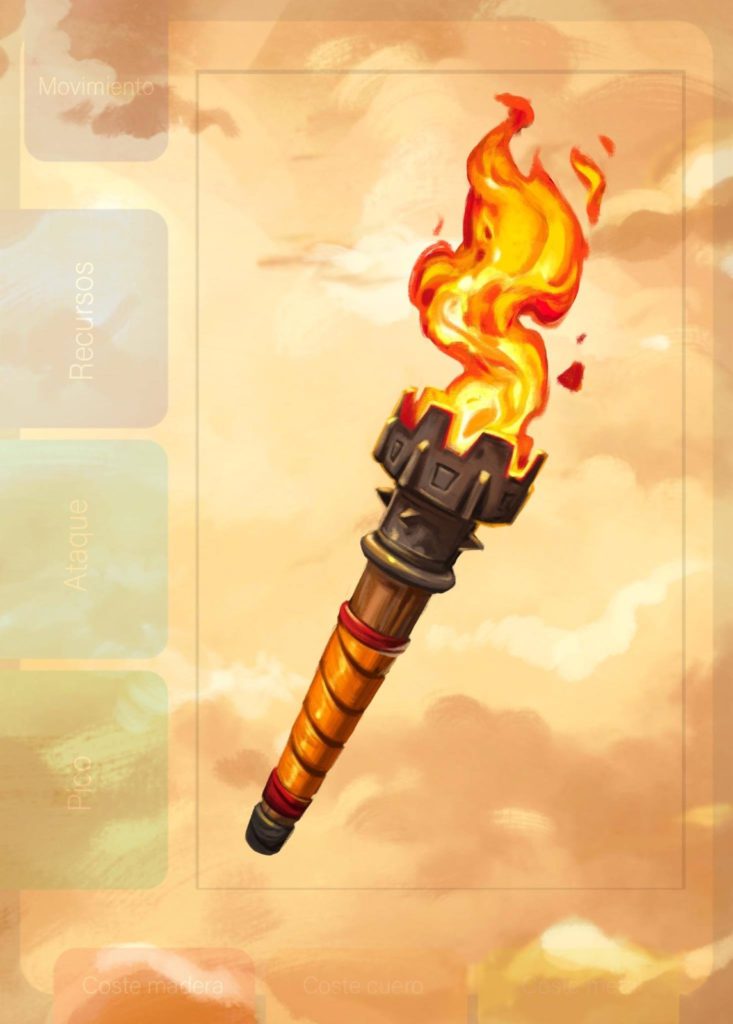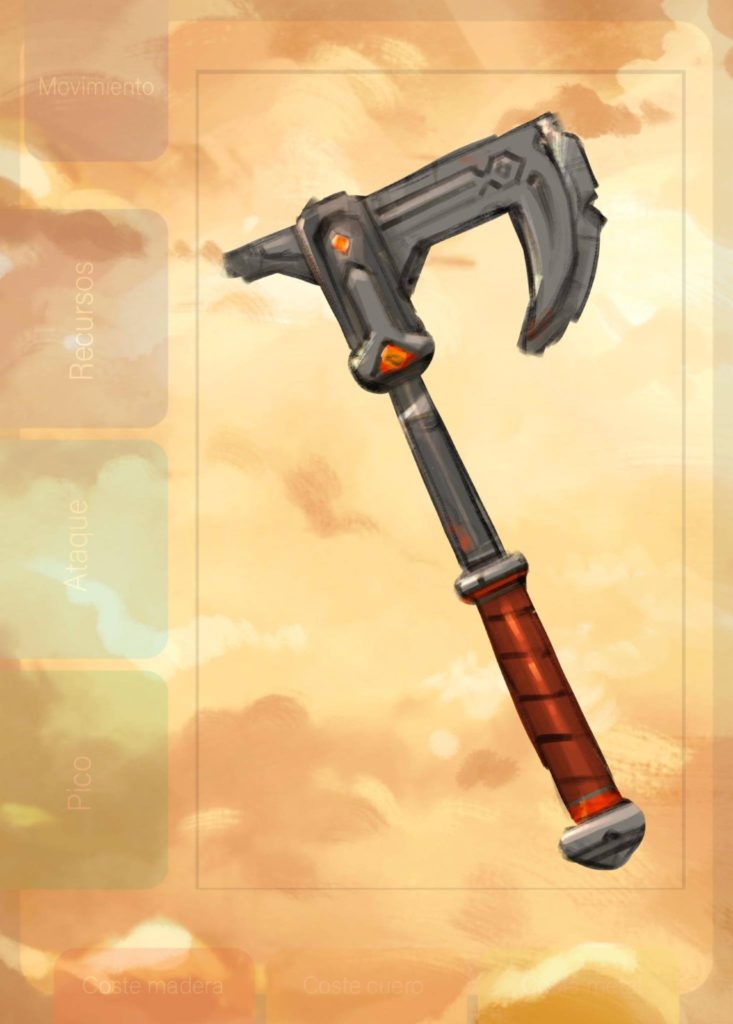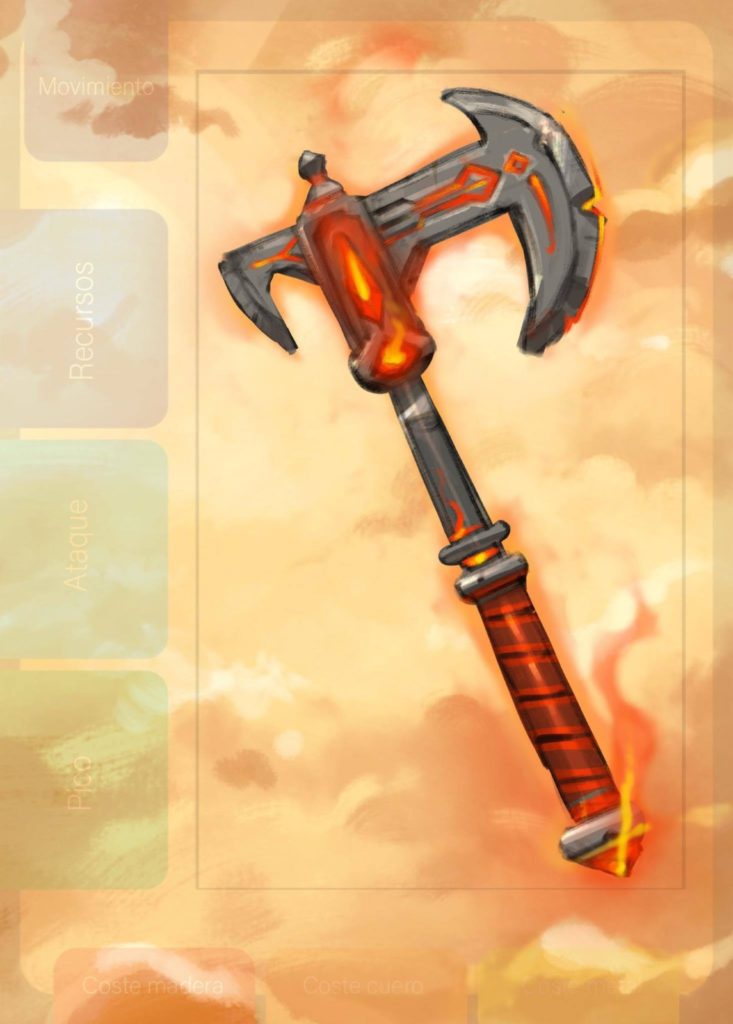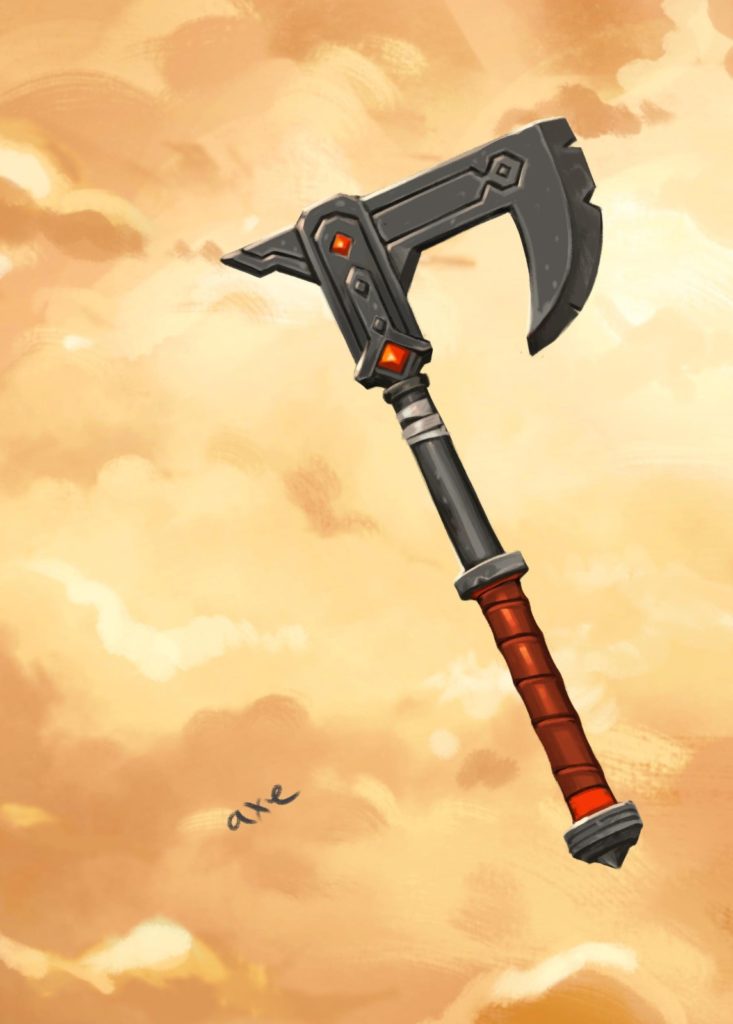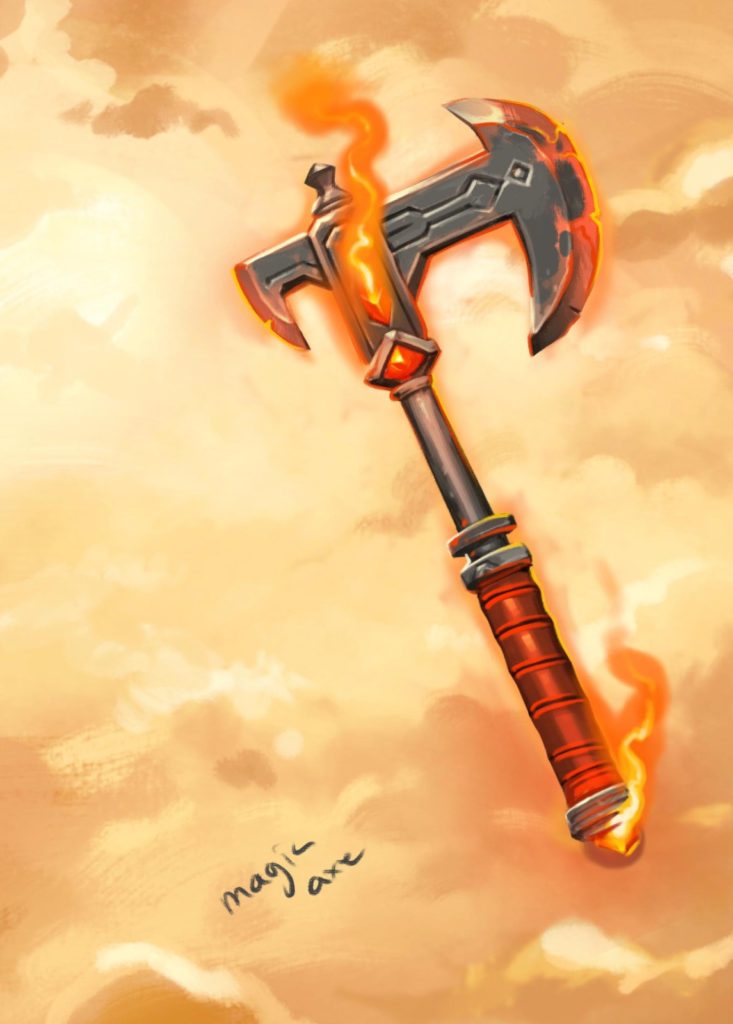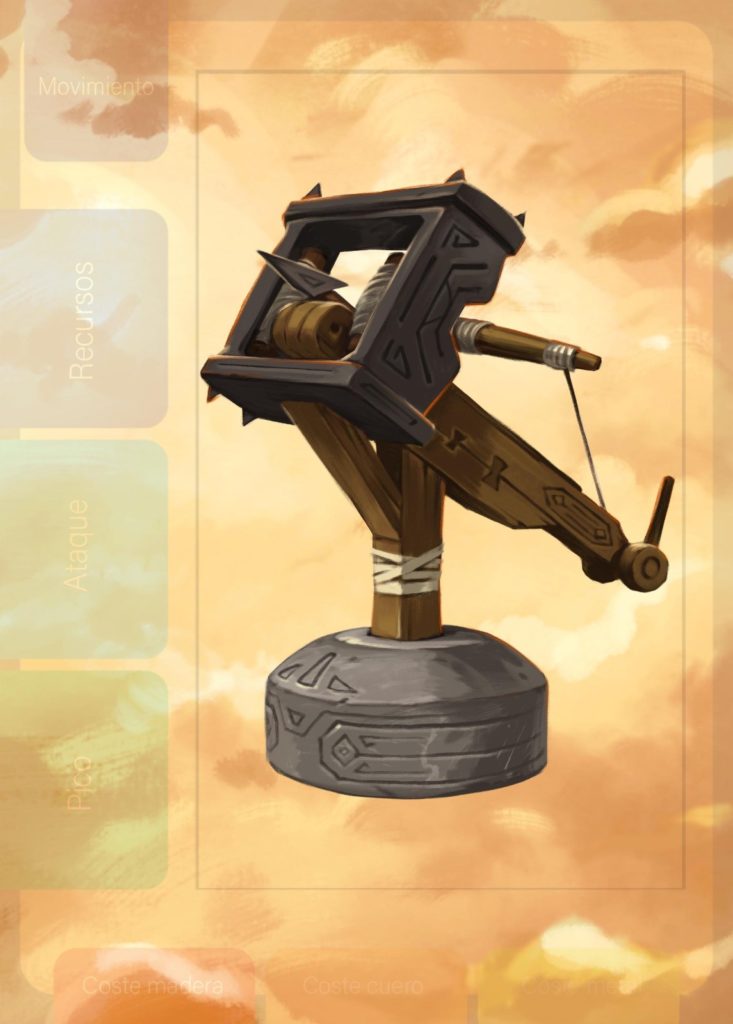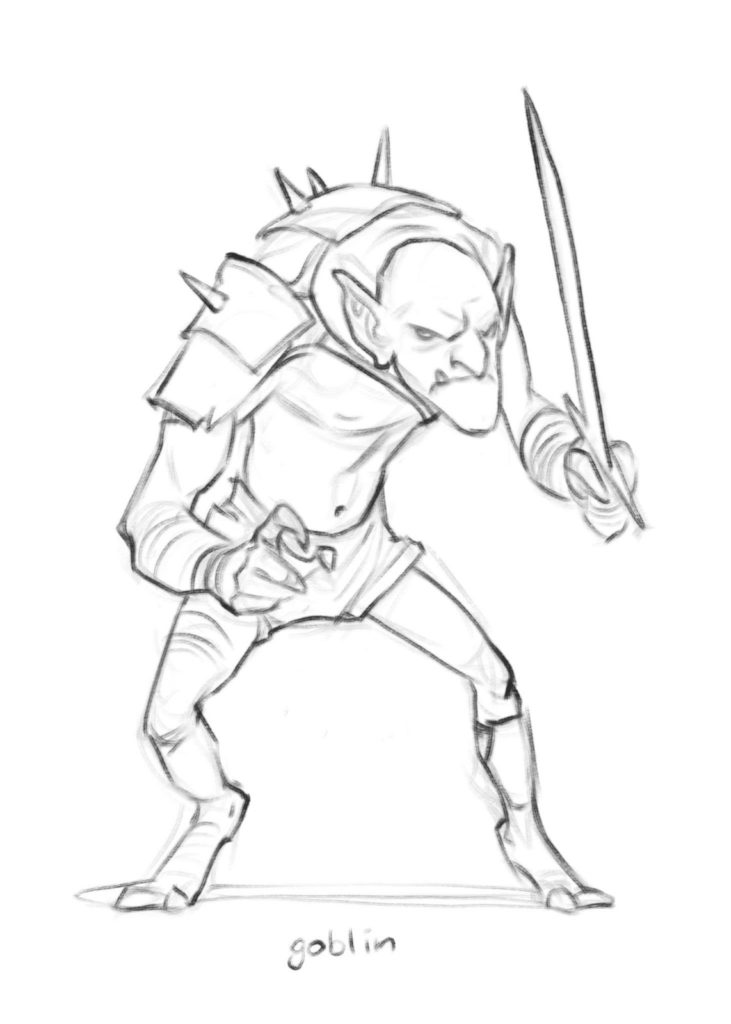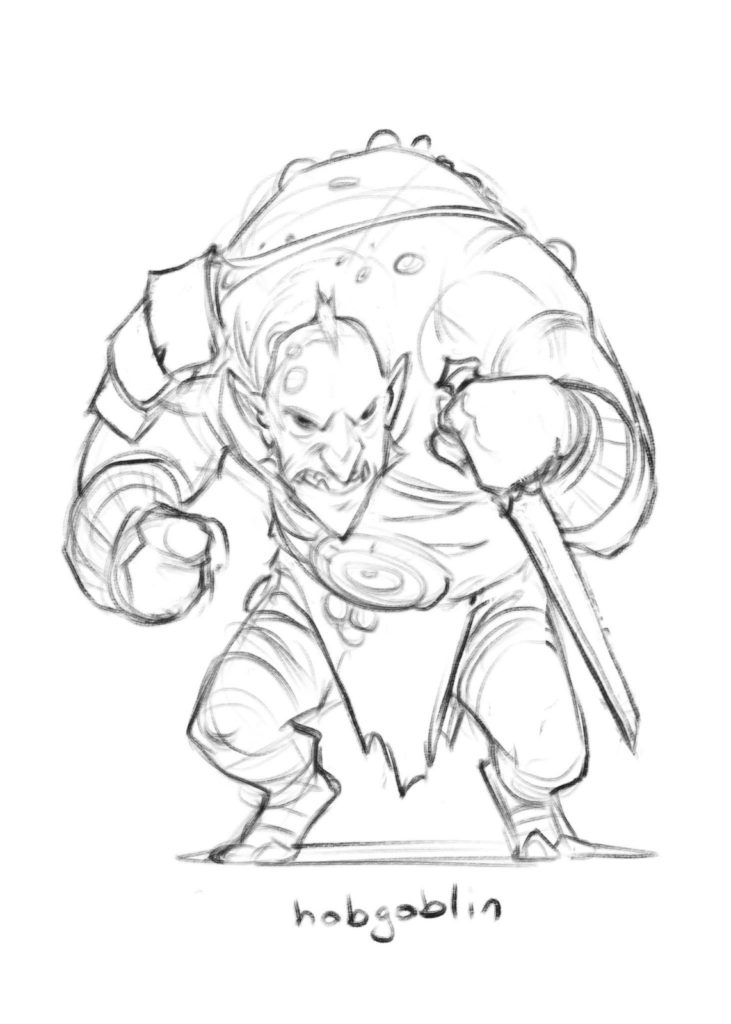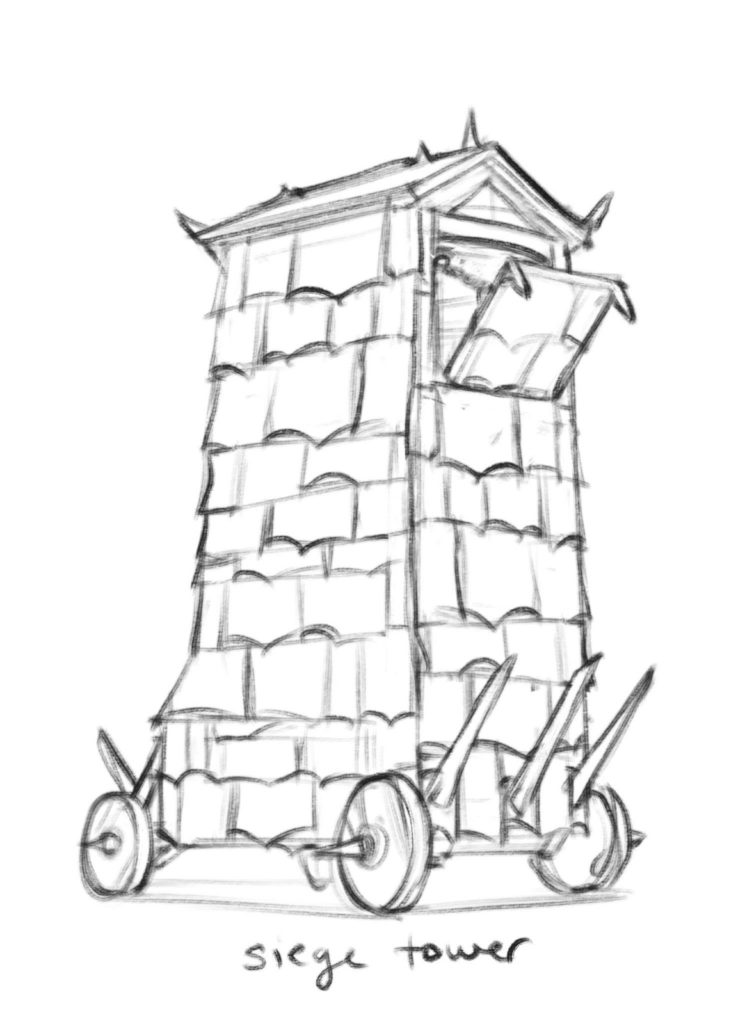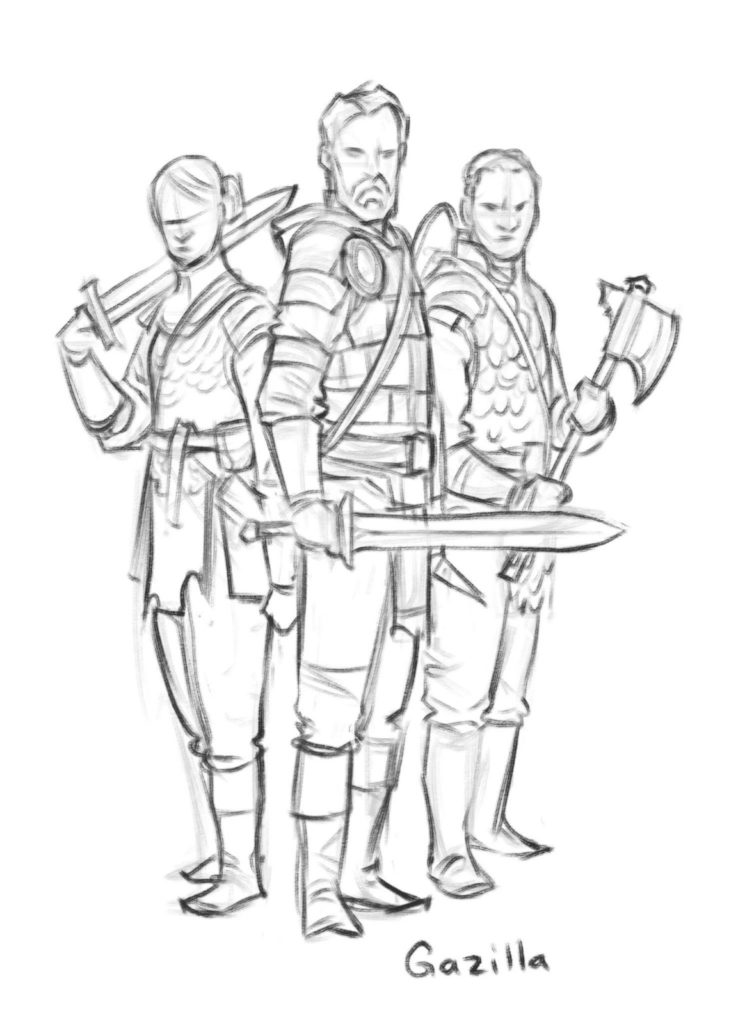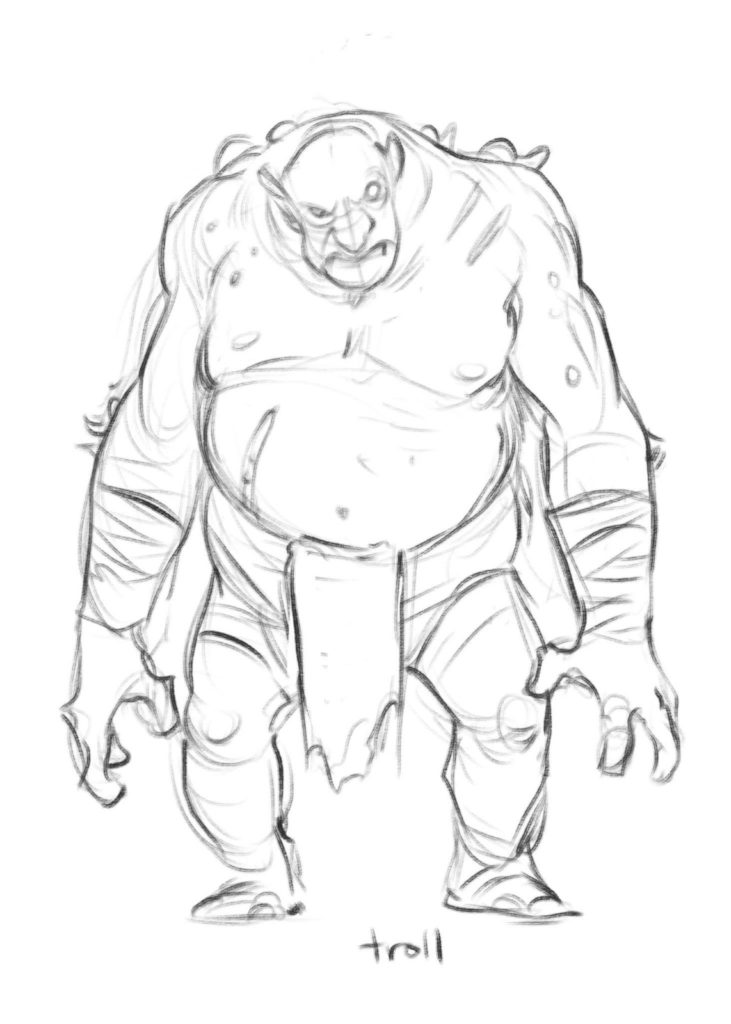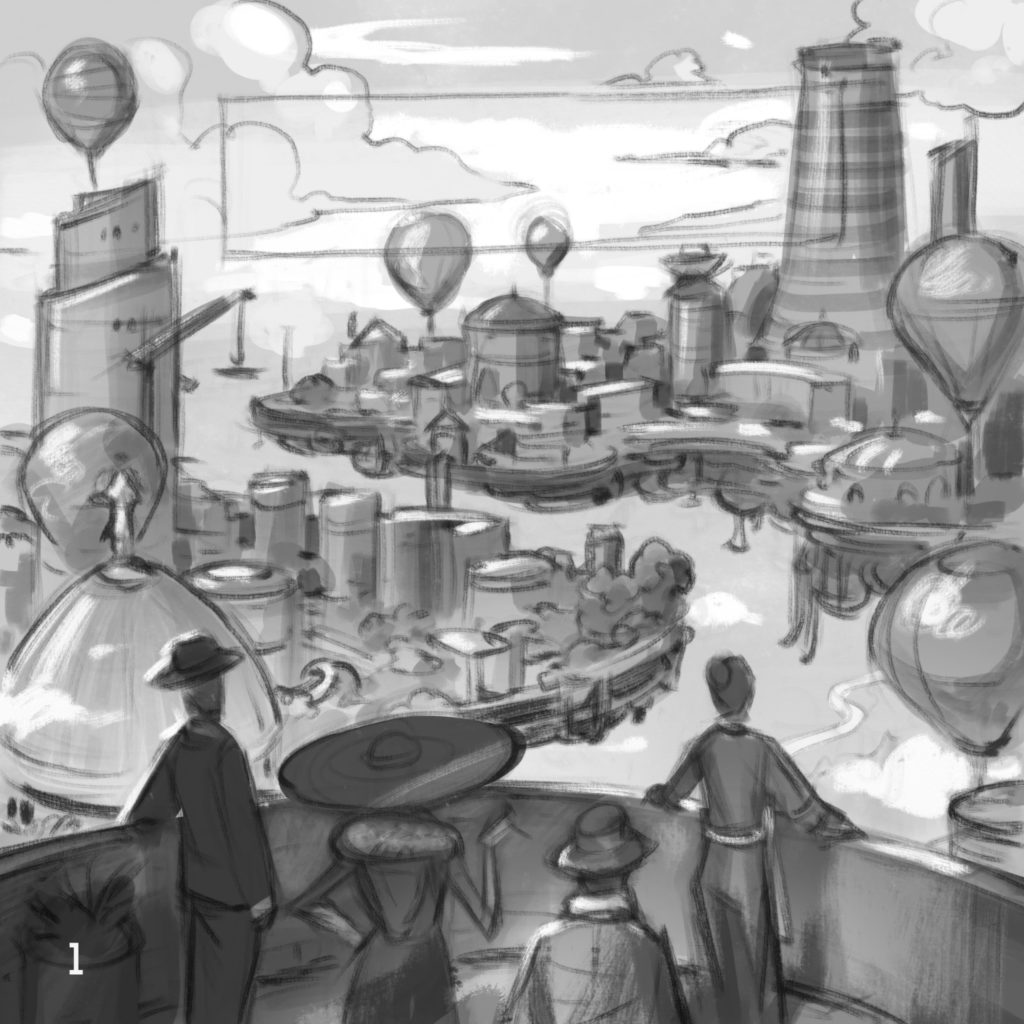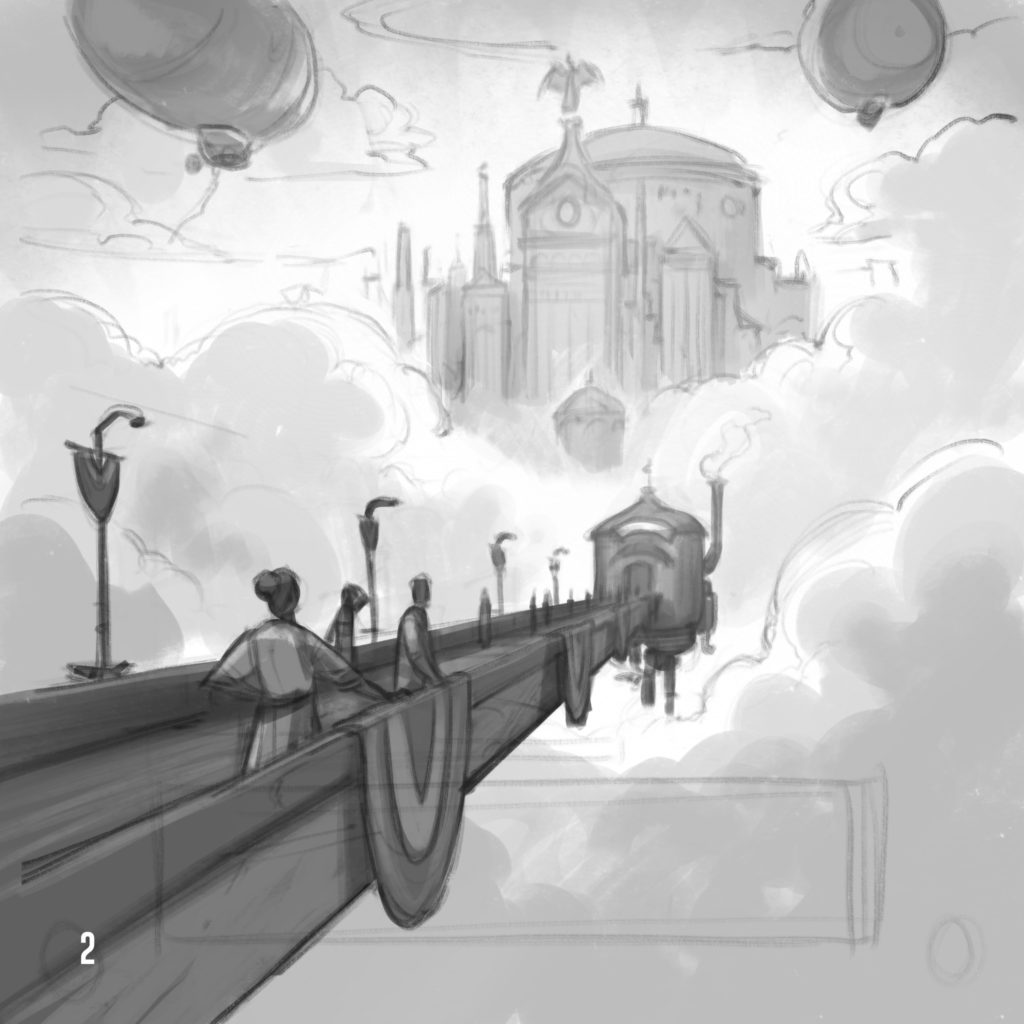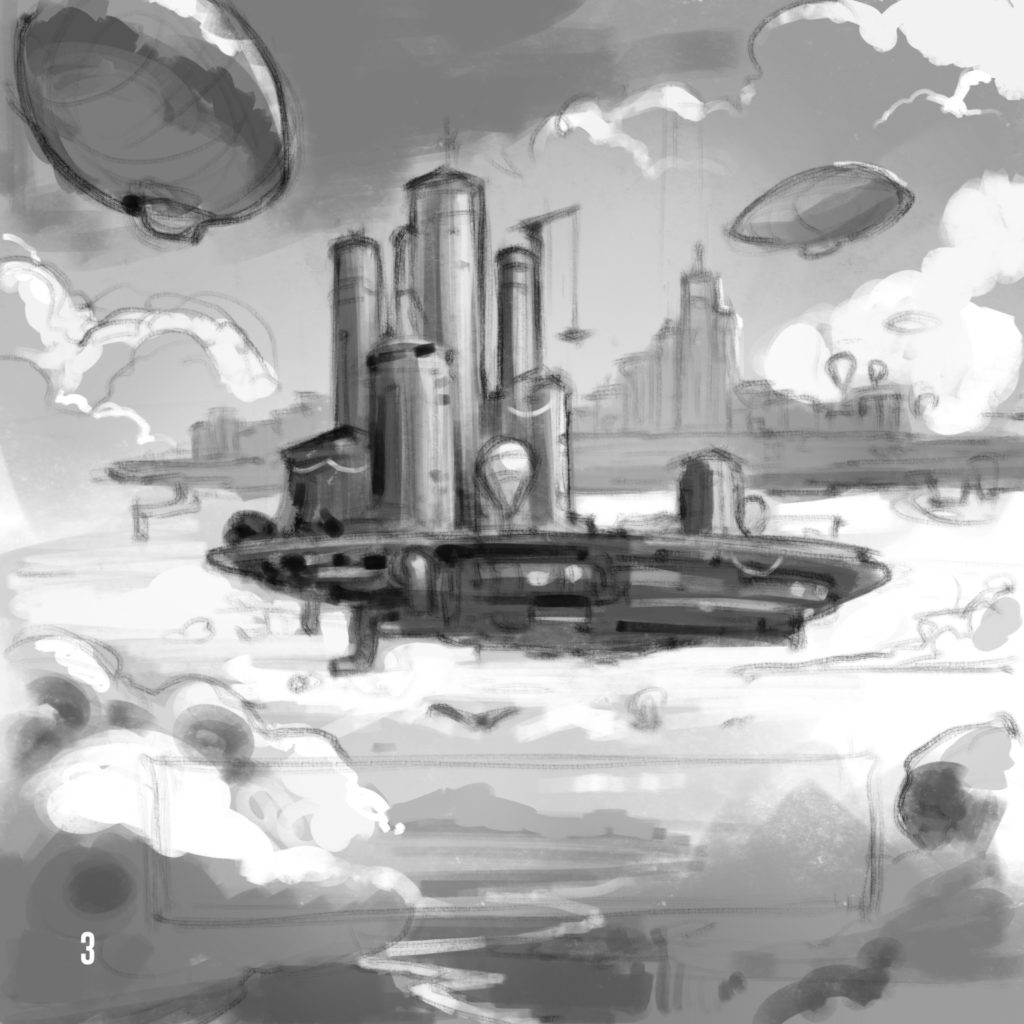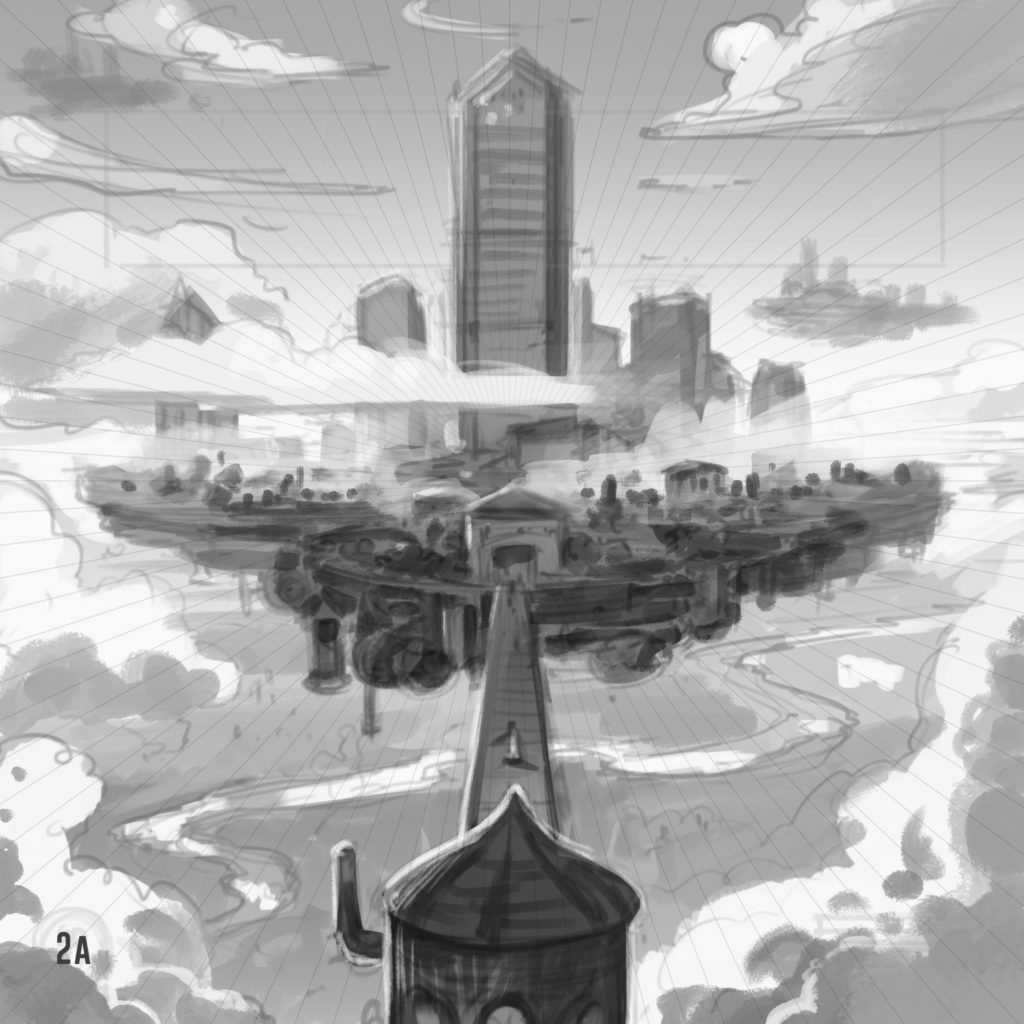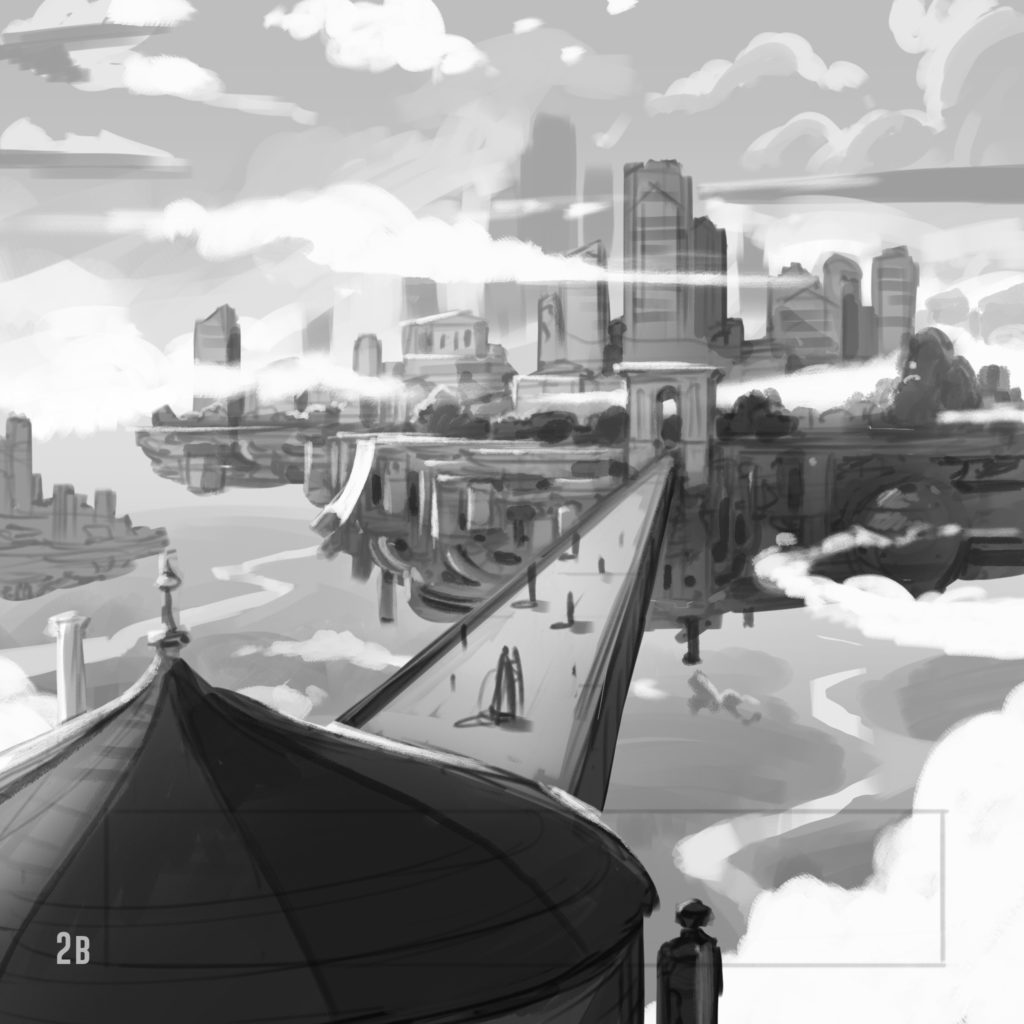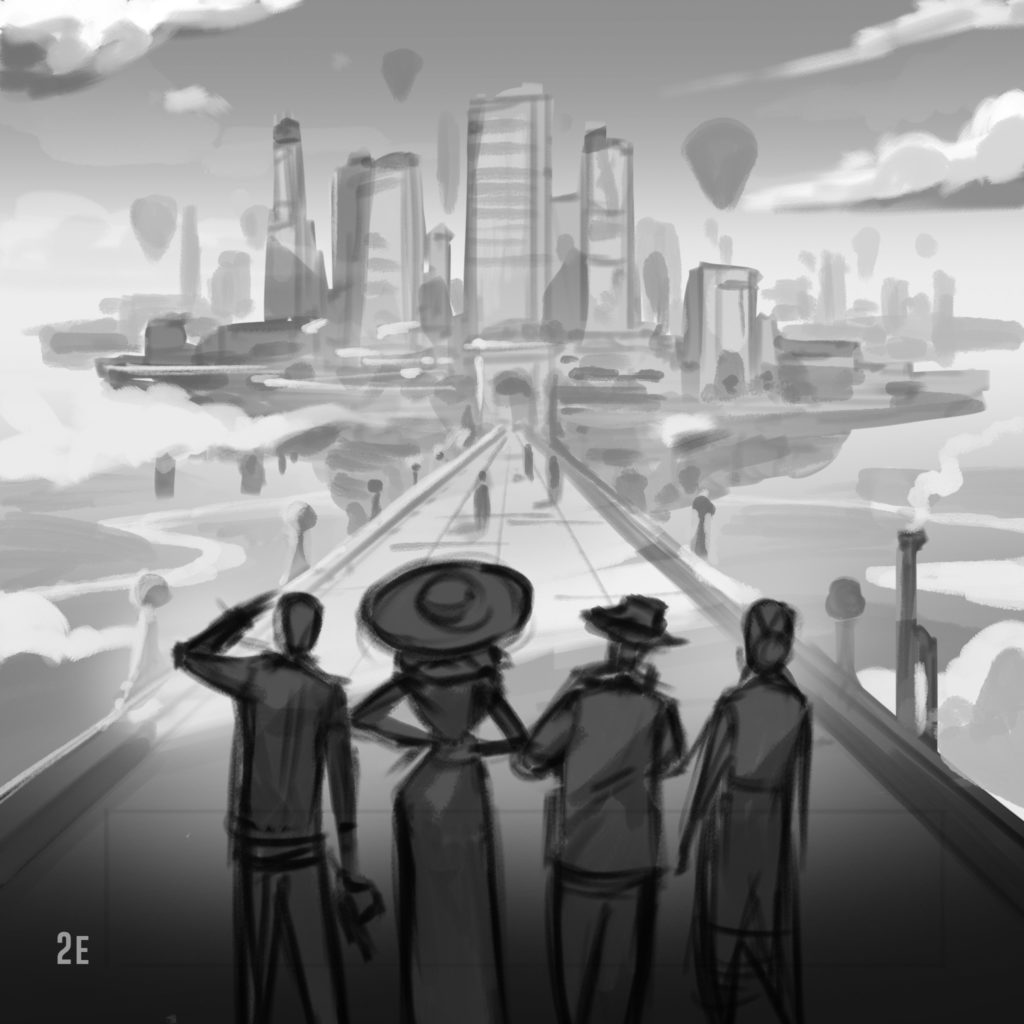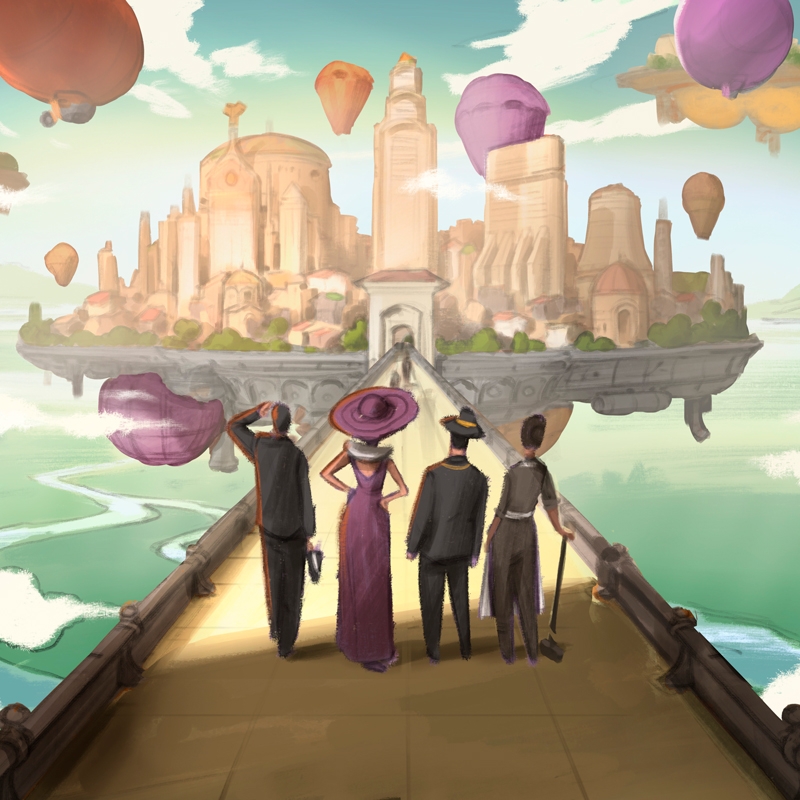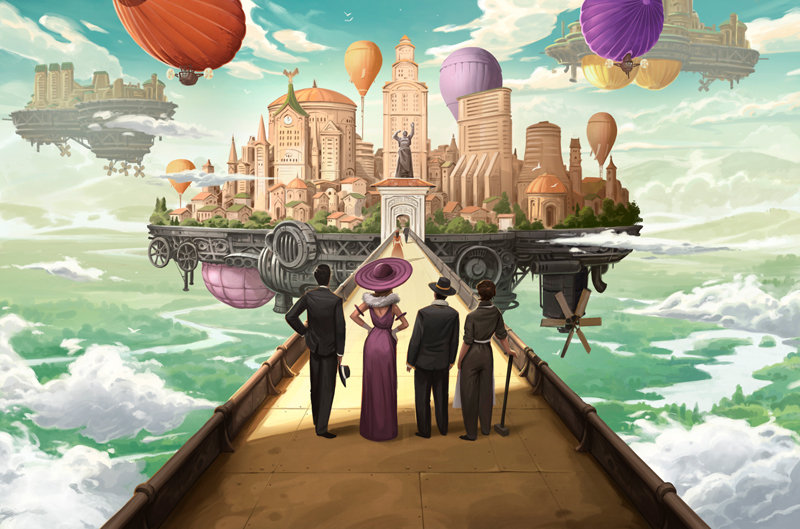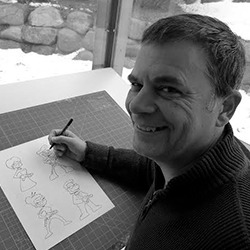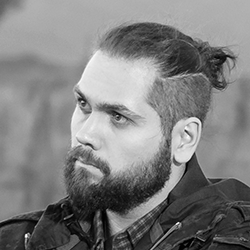
En nuestra entrevista número 55 hemos tenido la suerte de hablar con el ilustrador Andrew Bosley, responsable del arte de los exitosos juegos de mesa Everdell, Tapestry, Merchants of the Dark Road y del nuevo lanzamiento The Siege of Runedar de la editorial Ludonova. Durante la entrevista nos habla de sus inicios como ilustrador en la industria de los juegos de mesa, cómo fue el proceso creativo de algunos de sus mejores trabajos ilustrados y nos dará algunos consejos para los artistas gráficos del sector.
ENG | How were your beginnings as a board game illustrator and your career path?
Mission: Red Planet was my first professional job in board games and I loved it. But I assumed it was a one-off opportunity and continued to work in video games, which was my bread and butter at the time. Then FFG came back with another game, the redesign of Citadels. I was getting the taste for the industry, but was still on the outside. It wasn’t until an art director at Starling Games contacted me and I began work on Everdell that my new career in tabletop really began.
ESP | ¿Cómo fueron tus inicios como ilustrador de juegos de mesa y tu carrera profesional?
Misión: Planeta Rojo fue mi primer trabajo profesional en juegos de mesa y me encantó. Pero asumí que era una oportunidad única y seguí trabajando en videojuegos, que era mi pan de cada día. Entonces FFG volvió con otro juego, el rediseño de Ciudadelas. Le estaba cogiendo el gusto a la industria, pero todavía estaba fuera. No fue hasta que un director de arte de Starling Games se puso en contacto conmigo y empecé a trabajar en Everdell, con el cual empezó realmente mi nueva carrera en el mundo de los juegos de mesa.
ENG | What is your favorite artistic technique? For digital art, what software do you use?
Hmmm…I don’t know if I have a favorite art technique…I can appreciate a lot of them. But, I was trained as a traditional painter and was inspired by the painterly, but representative styles of artists like Alphonse Mucha, John Singer Sargeant, and NC Wyeth, among so many others. For digital art, I work more and more on my iPad and use the Procreate app. But the transition from a desktop workspace to a more mobile one was only possible because Procreate continued to add features that mimicked the way I worked in Photoshop so well.
ESP | ¿Cuál es su técnica artística favorita? Para el arte digital, ¿qué software utilizas?
Hmmm… no sé si tengo una técnica artística favorita… puedo apreciar muchas de ellas. Pero, me formé como pintor tradicional y me inspiré en los estilos pictóricos, pero representativos, de artistas como Alphonse Mucha, John Singer Sargeant y NC Wyeth, entre tantos otros. Para el arte digital, trabajo cada vez más en mi iPad y uso la aplicación Procreate. Pero la transición de un espacio de trabajo de escritorio a uno más móvil solo fue posible porque Procreate siguió añadiendo funciones que imitaban muy bien la forma en que trabajaba en Photoshop.
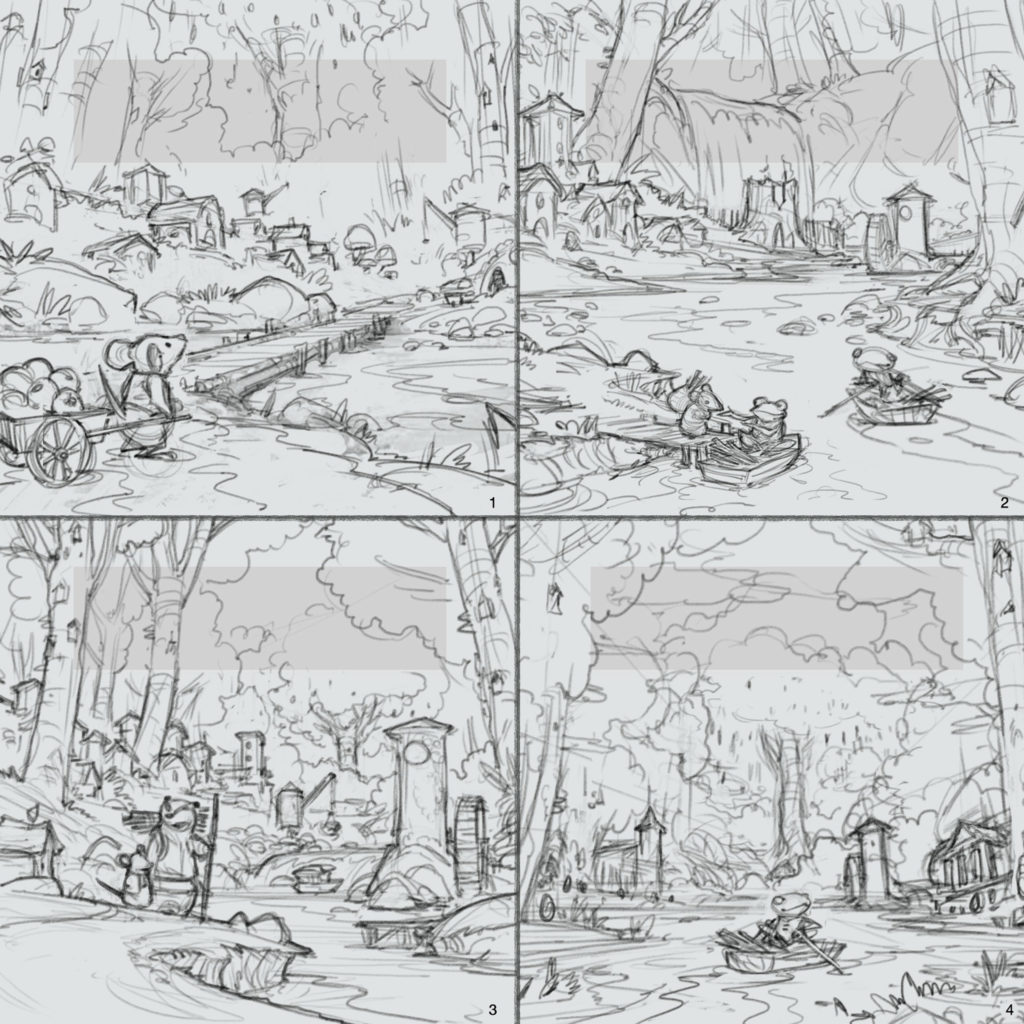
ENG | You are responsible for the art of the famous Everdell board game, what was the inspiration for the creation of this incredible world and what curiosities or peculiarities can you tell us about its creation?
Everdell was really a perfect match for me. I grew up reading the Redwall series and watching great animated films like the Secret of Nimh and An American Tale. I’d come home from the theater or put down my book and draw the characters I saw on the screen or read on the page…or made up my own in those worlds. I even spent a summer interning at Hallmark Cards painting cute animals for greeting cards. It was just a perfect fit. And the process has been a lot simpler than people might expect. Dann May, the art director for Everdell, put a lot of trust in me and I was allowed a lot of freedom to illustrate the characters and places in Everdell the way that made the most sense to me.
ESP | Eres el responsable del arte del famoso juego de mesa Everdell, ¿cuál fue la inspiración para la creación de este increíble mundo y qué curiosidades o peculiaridades puedes contarnos sobre su creación?
Everdell fue realmente una combinación perfecta para mí. Crecí leyendo la serie Redwall y viendo grandes películas de animación como El secreto de Nimh y Un cuento americano. Volvía a casa del cine o de la biblioteca y dibujaba los personajes que veía en la pantalla o leía en los libros… o me inventaba los míos propios en esos mundos. Incluso pasé un verano de prácticas en Hallmark Cards pintando simpáticos animales para tarjetas de felicitación. Era algo perfecto. Y el proceso ha sido mucho más sencillo de lo que la gente podría esperar. Dann May, el director artístico de Everdell, confió mucho en mí y me dio mucha libertad para ilustrar los personajes y los lugares de Everdell de la manera que tuviera más sentido para mí.
ENG | Can you give us 3 tips that you consider key for the illustration of a board game?
Hmmm…I don’t know if I can come up with 3 tips specific to board game illustration. Board game illustration is just like any other commercial art project. It serves a purpose beyond just looking pretty. In the case of board games, game design comes first and sometimes you have to give up some art ideas if they don’t support gameplay properly. It’s not about you, as the artist, or even the art itself. It’s what’s best for the product. If you can support the product fully and get totally creative, engaging art, then you’ve hit that sweet spot. But not all games need, or want, that.
ESP | ¿Puedes darnos 3 consejos que consideres clave para la ilustración de un juego de mesa?
Hmmm… No sé si se me ocurren 3 consejos específicos para la ilustración de juegos de mesa. La ilustración de juegos de mesa es como cualquier otro proyecto artístico comercial. Sirve para algo más que para ser bonita. En el caso de los juegos de mesa, el diseño del juego es lo primero y a veces hay que renunciar a algunas ideas artísticas si no apoyan la jugabilidad adecuadamente. No se trata de ti, como artista, ni del arte en sí. Se trata de lo que es mejor para el producto. Si puedes apoyar el producto por completo y conseguir un arte totalmente creativo y atractivo, habrás dado en el clavo. Pero no todos los juegos necesitan, o quieren, eso.
ENG | We want to highlight the art made for Tapestry. How was the creative process for this project?
Tapestry was unique in that I helped to create the look of the game as a whole and that meant working as graphic designer and art director at the same time as being the illustrator. While I do that with my own personal projects, I don’t normally fill those roles with client projects. Jamey Stegmaier put a lot of faith in me to create something that supported game design, made it appealing to look at, and fit the theme of worldbuiding. In the end, it was a very rewarding process and I hope the players have found the art to add to the gameplay experience.
ESP | Queremos destacar el arte realizado para Tapestry. ¿Cómo fue el proceso creativo de este proyecto?
Tapestry fue único en el sentido de que ayudé a crear el aspecto del juego en su conjunto y eso significó trabajar como diseñador gráfico y director de arte al mismo tiempo que como ilustrador. Aunque lo hago con mis propios proyectos personales, no suelo desempeñar esas funciones con los proyectos de los clientes. Jamey Stegmaier confió mucho en mí para que creara algo que apoyara el diseño del juego, lo hiciera atractivo a la vista y encajara en el tema de la construcción del mundo. Al final, fue un proceso muy gratificante y espero que los jugadores hayan encontrado en el arte un complemento a la experiencia de juego.
ENG | Can you tell us a bit about your creative process on the new board game The Siege of Runedar from Ludonova?
Runedar was a fun project that, on the surface, might not seem like a theme that requires a lot of thought. What new things can you do with dwarves and goblins? While we certainly kept a lot of traditional tropes (because, let’s face it…dwarves have a look, right?), we also tried our best to explore new directions too. In the end, I think we found that sweet spot that supported the design effectively and implied a deep, rich theme and world behind the gameplay.
ESP | ¿Puede hablarnos un poco de tu proceso creativo en el nuevo juego de mesa The Siege of Runedar de la editorial Ludonova?
Runedar fue un proyecto divertido que, a primera vista, podría no parecer un tema que requiera mucha reflexión. ¿Qué cosas nuevas se pueden hacer con los enanos y los goblins? Aunque ciertamente mantuvimos muchos tópicos tradicionales (porque, seamos sinceros… los enanos tienen su propio look, ¿no?), también nos esforzamos por explorar nuevas direcciones. Al final, creo que encontramos el equilibrio perfecto que apoyaba el diseño de forma efectiva e implicaba un tema y un mundo profundo y rico detrás de la jugabilidad.
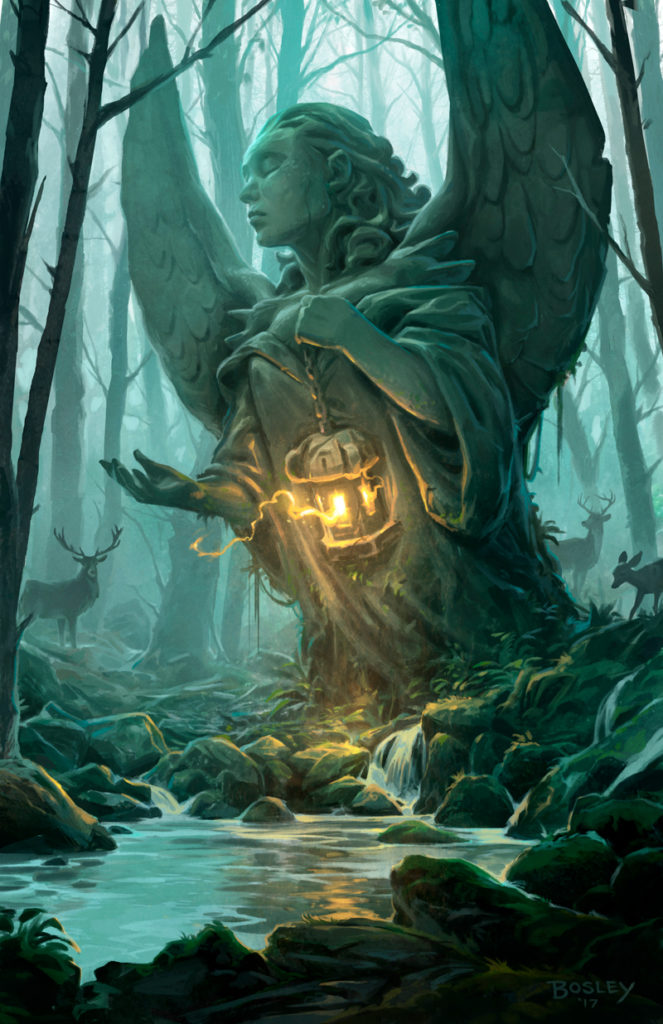
ENG | What projects are you currently working on?
Lots of stuff I can’t talk about 🙂 Haha! Probably the thing I’m most excited about is an upcoming game project in connection with my personal brand, Wits End. I’ve been developing some stories and art in a world of my own creation for many, many years now. That world will be coming to life in an upcoming (art-strong) board game designed by a great team of designers and backed by a very well known publisher. It’ll be thinky and immersive…hopefully drawing from the best of some of my favorite games like Everdell and Scythe. I think it’s going to be pretty big 🙂
ESP | ¿En qué proyectos estás trabajando actualmente?
Hay muchas cosas de las que no puedo hablar 🙂 Jaja. Probablemente lo que más me entusiasma es un próximo proyecto de juego relacionado con mi marca personal, Wits End. He estado desarrollando algunas historias y arte en un mundo de mi propia creación durante muchos, muchos años. Ese mundo cobrará vida en un próximo juego de mesa (con mucho arte) diseñado por un gran equipo de diseñadores y respaldado por una editorial muy conocida. Será un juego muy interesante y envolvente… espero que se inspire en lo mejor de algunos de mis juegos favoritos, como Everdell y Scythe. Creo que va a ser bastante grande 🙂
ENG | Finally, any advice for illustrators on how to create a portfolio that impresses publishers?
For most of my career, I’ve aimed to be a «jack of all trades»…to make myself as employable as possible. When I worked more in video games, often each studio had an established look that I’d need to match if I wanted to work with them. Publishing can be the same. As advice for illustrators in general, looking to illustrate no matter the industry, I still believe that’s a good path to follow…at least at the start of a career. But if your focus is only board games, I’d head towards finding a consistent style that you’re happy with and competent in. Board game publishers rarely have a «studio style» you need to adhere to and it’s hard to imagine an artistic style that couldn’t possibly be used in a board game. If you have a style you’re comfortable with, build a portolio that showcases that style and illustrates your knowledge of the industry.
ESP | Por último, ¿algún consejo para los ilustradores sobre cómo crear un portafolio que impresione a los editores?
Durante la mayor parte de mi carrera, he procurado ser un «gato de todos los oficios»… para ser lo más empleable posible. Cuando trabajaba más en el sector de los videojuegos, a menudo cada estudio tenía una imagen establecida a la que tenía que ajustarme si quería trabajar con ellos. El mundo editorial puede ser igual. Como consejo para los ilustradores en general, que buscan ilustrar sin importar la industria, sigo creyendo que es un buen camino a seguir… al menos al principio de la carrera. Pero si tu objetivo son los juegos de mesa, yo me decantaría por encontrar un estilo coherente con el que te sientas feliz y competente. Los editores de juegos de mesa rara vez tienen un «estilo de estudio» al que haya que adherirse y es difícil imaginar un estilo artístico que no pueda utilizarse en un juego de mesa. Si tienes un estilo con el que te sientes cómodo, crea un portafolio que muestre ese estilo e ilustre tu conocimiento de la industria.
Muchas gracias Andrew Bosley 😉
(Todas las imágenes cedidas por Andrew Bosley)

